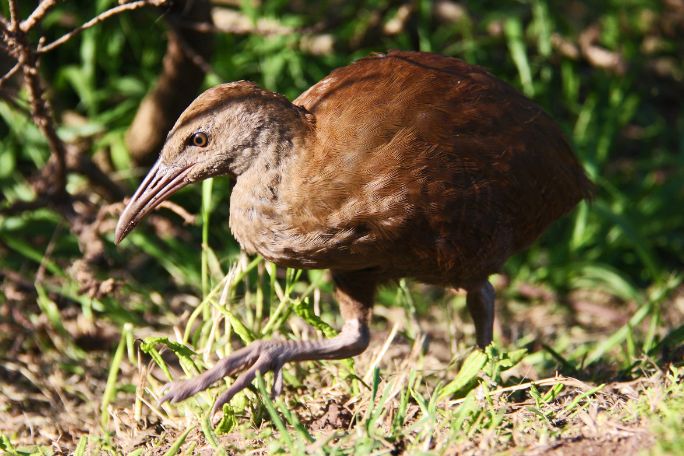Lesson summary
Students explore the human impacts on the environment of Lord Howe Island. They begin by thinking about the impacts humans can have on our environment and the actions we can take to address these challenges. They then look at the specific problems of climate change and plastic waste and how they apply to Lord Howe Island by reading a text about these issues and sharing their learning with a peer. They then work collaboratively to conduct research into personal actions we can all take to meet these challenges and create labels about these actions. These labels can then be incorporated into a 3D model of an island (if students have completed previous lessons in this unit this can be their own island; if they haven’t completed previous lessons, they will make a model of Lord Howe Island and incorporate these labels into their model).
Learning intentions:
Students will...
- understand some of the impacts humans can have on our environment
- understand the ways that climate change and plastic waste affect our environment, including the environment on Lord Howe Island
- recognise actions we can take to meet these challenges.
Success criteria:
Students can...
- participate in a barometer activity to explore the ways that humans impact our environment
- conduct research to suggest actions for addressing environmental challenges
- create a 3D model of either Lord Howe Island or their own island that incorporates learnings from this lesson and from other lessons (where completed).
Lesson guides and printables
Lesson details
Curriculum mapping
Australian curriculum content descriptions:
Year 5 HASS:
- The influence of people, including Aboriginal and Torres Strait Islander Peoples, on the environmental characteristics of Australian places (ACHASSK112)
- The environmental and human influences on the location and characteristics of a place and the management of spaces within them (ACHASSK113)
- Locate and collect relevant information and data from primary sources and secondary sources (ACHASSI095)
- Reflect on learning to propose personal and/or collective action in response to an issue or challenge, and predict the probable effects (ACHASSI104)
- Present ideas, findings, viewpoints and conclusions in a range of texts and modes that incorporate source materials, digital and non-digital representations and discipline-specific terms and conventions (ACHASSI105)
Year 5 Science:
- Communicate ideas, explanations and processes using scientific representations in a variety of ways, including multi-modal texts (ACSIS093)
Year 6 HASS:
- Locate and collect relevant information and data from primary sources and secondary sources (ACHASSI123)
- Reflect on learning to propose personal and/or collective action in response to an issue or challenge, and predict the probable effects (ACHASSI132)
- Present ideas, findings, viewpoints and conclusions in a range of texts and modes that incorporate source materials, digital and non-digital representations and discipline-specific terms and conventions (ACHASSI133)
Year 6 Science:
- The growth and survival of living things are affected by physical conditions of their environment (ACSSU094)
- Communicate ideas, explanations and processes using scientific representations in a variety of ways, including multi-modal texts (ACSIS110)
Syllabus outcomes: GE3-2, GE3-3, GE3-4, ST3-4WS
General capabilities: Critical and Creative Thinking
Cross-curriculum priority: Sustainability OI.6, OI.7, OI.9
Relevant parts of Year 5 Science achievement standards: Students communicate their ideas and findings using multimodal texts
Relevant parts of Year 5 HASS achievement standards: Students identify and describe the interconnections between people and the human and environmental characteristics of places, and between components of environments. They identify the effects of these interconnections on the characteristics of places and environments. Students work with others to generate alternative responses to an issue or challenge and present their ideas, findings and conclusions in a range of communication forms using discipline-specific terms and appropriate conventions.
Relevant parts of Year 6 Science achievement standards: Students describe and predict the effect of environmental changes on individual living things. They construct multimodal texts to communicate ideas, methods and findings.
Relevant parts of Year 6 HASS achievement standards: Students reflect on their learning to propose action in response to an issue or challenge and present ideas, findings, viewpoints and conclusions in a range of communication forms that incorporate source materials, mapping, graphing, communication conventions and discipline-specific terms.
This lesson is part of the wider unit of work Lord Howe Island – Years 5 & 6
Time required: 60 mins
Level of teacher scaffolding: Medium – facilitate class discussion, lead students in the model-making activity
Resources required
- 3D model making materials, such as cardboard, modelling clay or playdough
- Agree Disagree Signs
- Climate Change Factsheet
- Lord Howe Island – Overview Factsheet – optional
- Lord Howe Island Map – optional
- Lord Howe Island Image – optional
- Plastic Waste Factsheet
- String
- Student Worksheets – one copy per student
Skills
This lesson is designed to build students’ competencies in the following skills:
- Communication
- Community engagement
- Creativity
- Critical thinking
- Problem solving
- Collaboration
Additional nfo
If you would like to access additional information about Joshua Yeldham and the photographs of his wonderful exhibition 'Providence'. Please visit the Arthouse Gallery website: Joshua Yeldham - Providence (arthousegallery.com.au/exhibitions/joshua_yeldham/providence) and the artist's website: Joshua Yeldham (www.joshuayeldham.com.au) for exhibitions and his wonderful book: Surrender (joshuayeldham.com.au/the-books). Providence and Surrender were completed during and after his Artist Residency on Lord Howe Island and during his stay at the Capella Lodge (capellalodge.com.au) on Lord Howe Island.


Welcome back!
Don't have an account yet?
Log in with:
By signing up to Cool.org you consent and agree to Cool's privacy policy to
store, manage and process your personal information. To read more, please see
our privacy policy here(Opens in new tab).
Create your free Cool.org account.
Many of our resources are free, with an option to upgrade to Cool+ for premium content.
Already have an account?
Sign up with:
By signing up to Cool.org you consent and agree to Cool's privacy policy to
store, manage and process your personal information. To read more, please see
our privacy policy here(Opens in new tab).